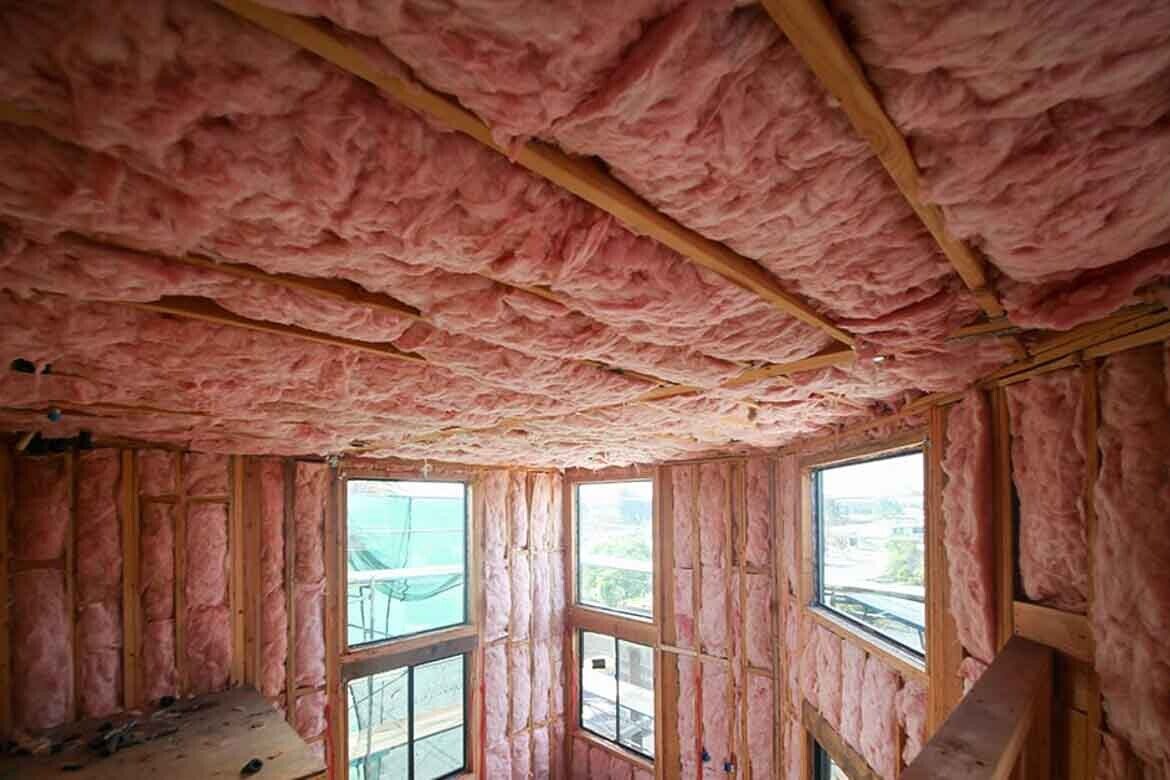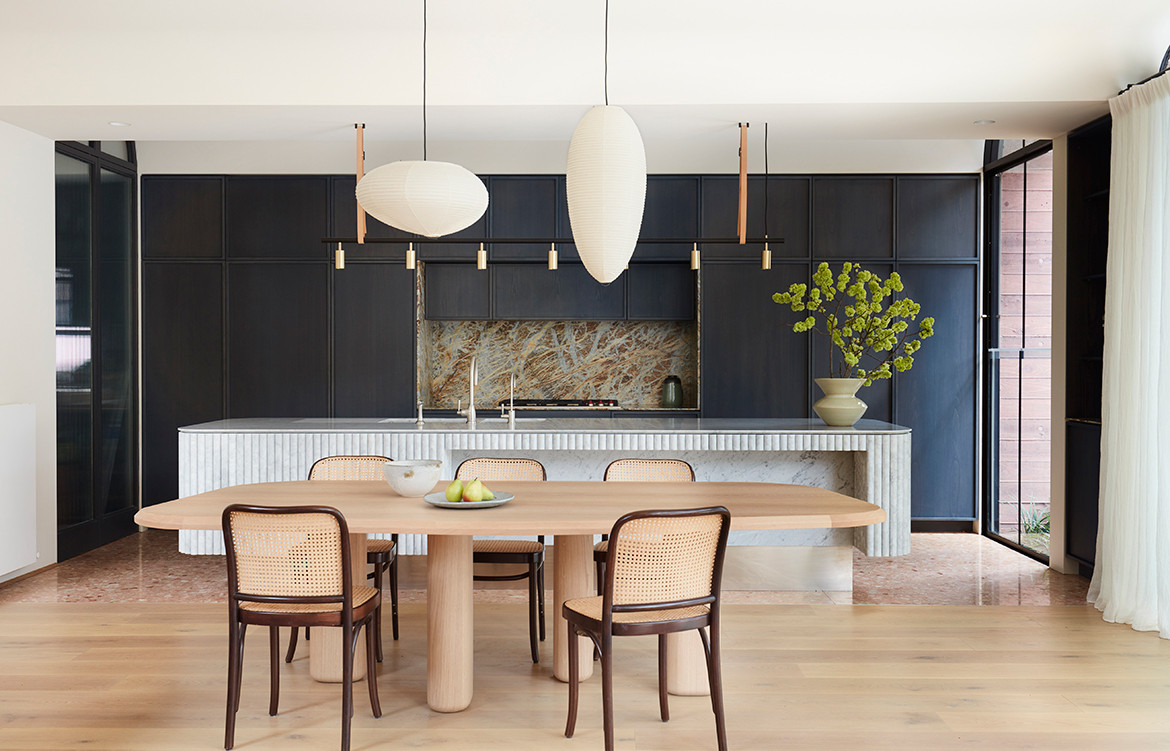What is the best insulation for your house?
The best type of insulation for your home will depend mostly on your climate and house design. For an Australian climate, bulk insulation from glasswool (also known as fiberglass insulation) is one of the most popular choices. However, there are a huge variety of insulation methods, styles and materials which could save you thousands on a heating bill when employed correctly.
What is insulation?
Insulation is a material installed within the walls with the purpose of temperature regulation. Insulating materials are designed to block or limit the passage of heat and/or sound. This is effective in both heating and cooling, as home insulation will help to maintain the current temperature inside the house.
Insulation has a number of benefits that make it an essential part of home design. Better thermal efficiency means less energy and money spent on artificial temperature control methods such as a heater or an air conditioner. It also means that when these devices are used, they will be more effective as the heated (or cooled) air will be trapped inside the house rather than leaking straight back outside. Insulation makes homes more environmentally friendly and costs-effective. Homes without insulation loose up to 35% of their heating through the roof during winter, and are likely to retain up to 35% more heat during summer.
Insulation is measured in R values, which delineates the insulation’s resistance to heat. The higher R value that an insulation has, the better suited it is to trapping or blocking heat. There are three main home insulation types currently in use today.

Home insulation options
The most common is bulk insulation, which can be purchased from insulation specialists and most hardware stores alike. Bulk or ‘thick’ insulation comes in the form of rolls, boards or batts. The most common materials used for bulk insulation include natural wool, polyester, glass wool, cellulose fiber and recycled paper.
Reflective insulation is the second most common form of insulation. It is also known as foil insulation and is made from a thin layer of reflective foil on the outer side or all sides, which will reflect heat back towards the source. It is cost effective and very popular in Australian homes. This type of insulation is best suited towards warmer climates. Kingspan air cell insulation is one of the leading brands for fiber free reflective insulation.
Finally, there is spray insulation. This technique has only emerged recently and has a much higher R value than old types of insulation. However, it is more flammable than traditional methods and also more expensive.

How to insulate a house: Insulation requirements for new homes
Manufacturer’s instructions are extremely important when it comes to installing insulation. Certain types of house insulation must be installed by professionals, though others can be achieved at home. Be aware of the product specifications, as well as the requirements for your home and in your state. The NCC and BASIX have established minimum total R values that must be followed (and are generally expected to be exceeded).
Good Insulating Materials for all house types: the five best home insulation types and materials
5. Ceiling insulation batts

Ceiling insulation batts are the most common form of roof insulation. They are often made from fiberglass and supplied in pre-cut rectangles. Ceiling insulation batts are the standard choice for ceiling insulation and as such are available from most major homeware stores, such as Bunnings. You can find a pack of 11 Earthwool ceiling batts (R5.0) here from the Bunnings online catalogue for just $65.
4. Natural fibers

Natural fibers refer to common non-chemical products such as cotton, sheep’s wool, straw and hemp. These materials usually have the lowest carbon footprint and are a great way to insulate sustainably. Natural materials can be treated to resist fire, mold and pests.
They are usually obtained from environmentally friendly and recycled sources, and can often be recycled themselves after use. Natural fibers are best suited for heat insulation in colder climates.
3. Foam

Spray foam insulation is a relatively recent development in insulation science. Though it was first invented in the 50s, latest advancements have seen spray foam recognized for its environmentally friendly status. Spray foam can even improve the durability of houses with wooden frames.
Foam insulation is particularly useful in areas that are difficult to access. It is allergen free as well as moisture, pest and fire resistant. Though it may seem expensive up front, spray foam is actually a very cost-effective option when factoring in the long term savings. However, spray foam is often created using polyurethane, which contains toxic compounds. This could potentially pose a health risk.
2. Fibreglass

Also known as glasswool, fiberglass is the most common insulation product in Australian homes. Fiberglass is mostly composed of glass and usually comes in the form of a blanket (batts) which will be installed within the walls or ceilings.
Fiberglass heat resistance can range from R-11 – R-19 for wall application and can reach up to R-30 for roof insulation. Fibreglass is also one of the most affordable materials and can cost as little as $4.26 per square meter.
1. Polyester insulation

Polyester is an insulation fiber typically regarded in competition with fiberglass. It is made from the same Polyethylene fiber that is often used in clothing and bedding. The best part about polyester insulation is that it is usually manufactured from recycled plastic materials, giving a new life to plastic waste. This makes it one of the more sustainable house insulation materials.
Polyester is also non-allergenic and non-toxic. It is most commonly used for wall insulation and will cost on average $15-$20 per square meter. Fiberglass building insulation does not have adverse health effects, though the material is an irritant – be sure to wear the appropriate PPE or have professionals install fiberglass insulation in your home.












